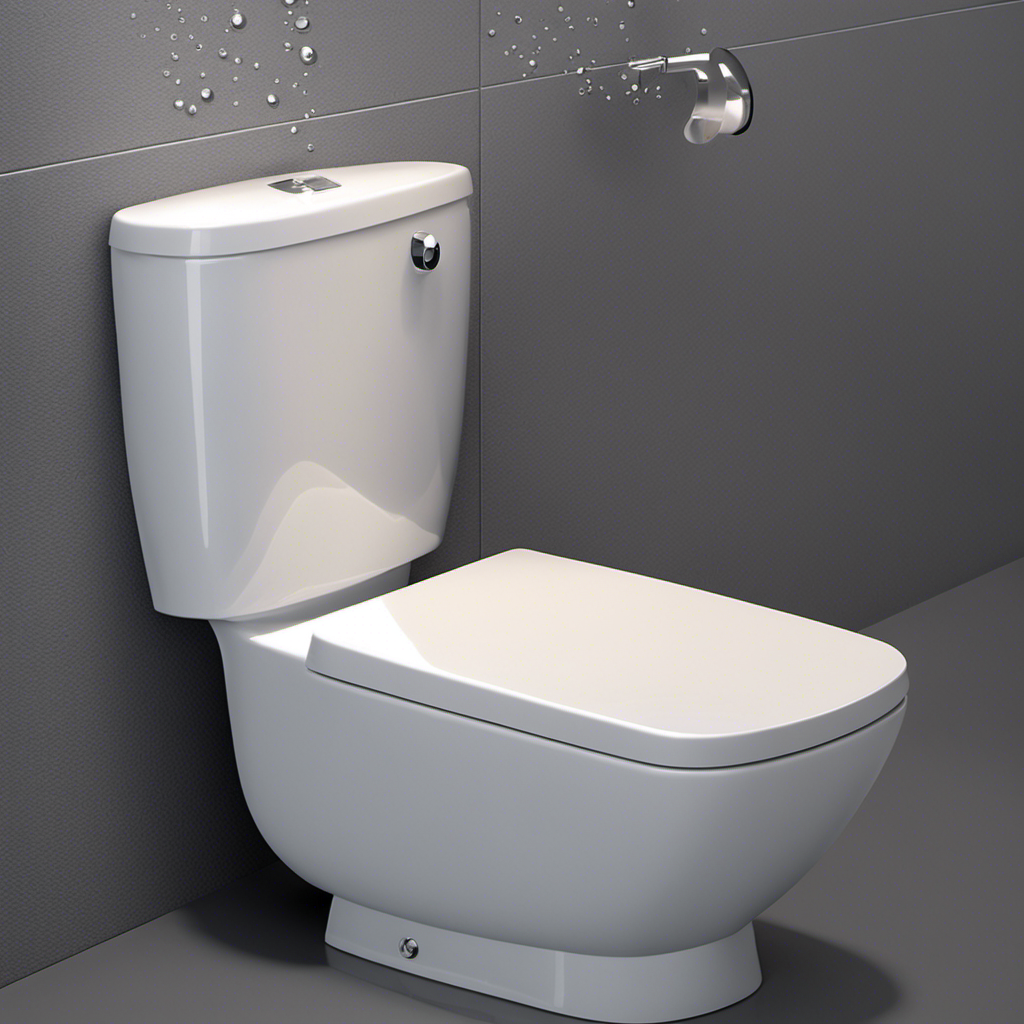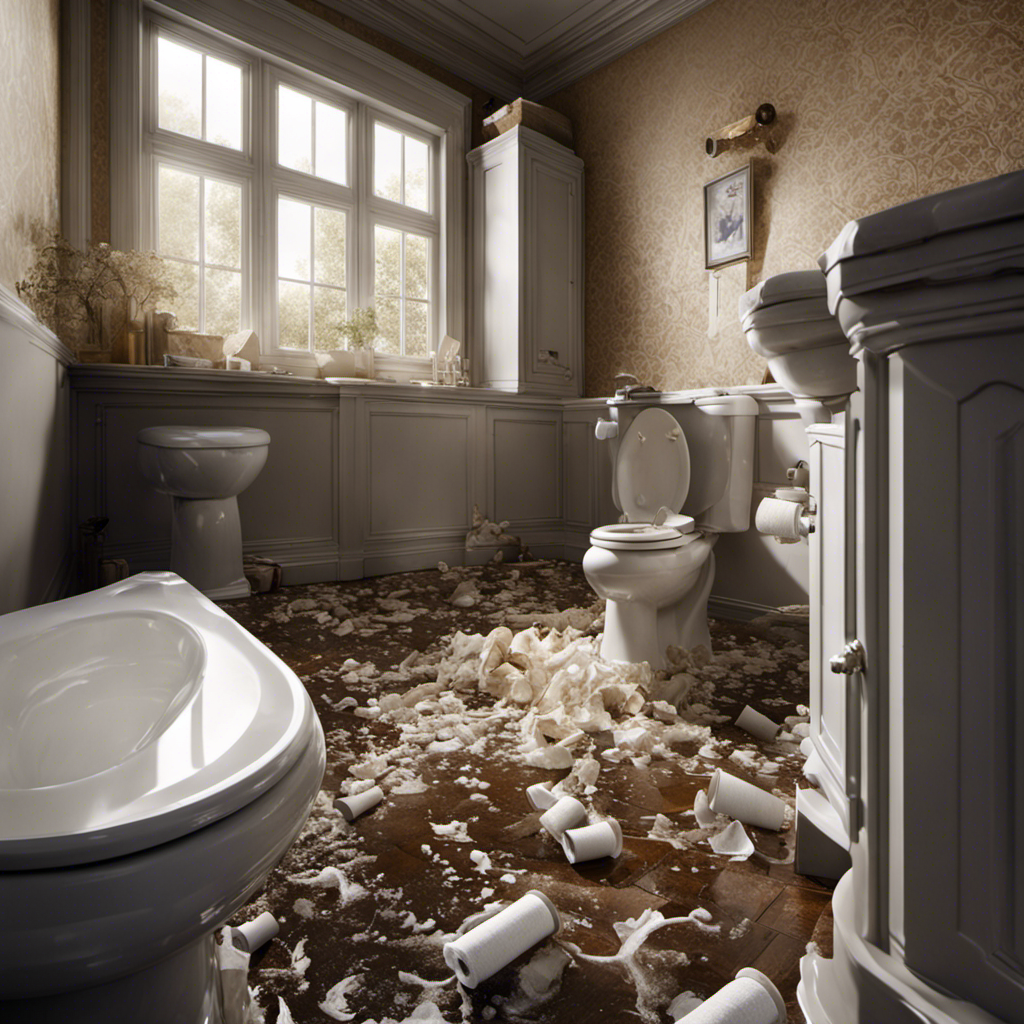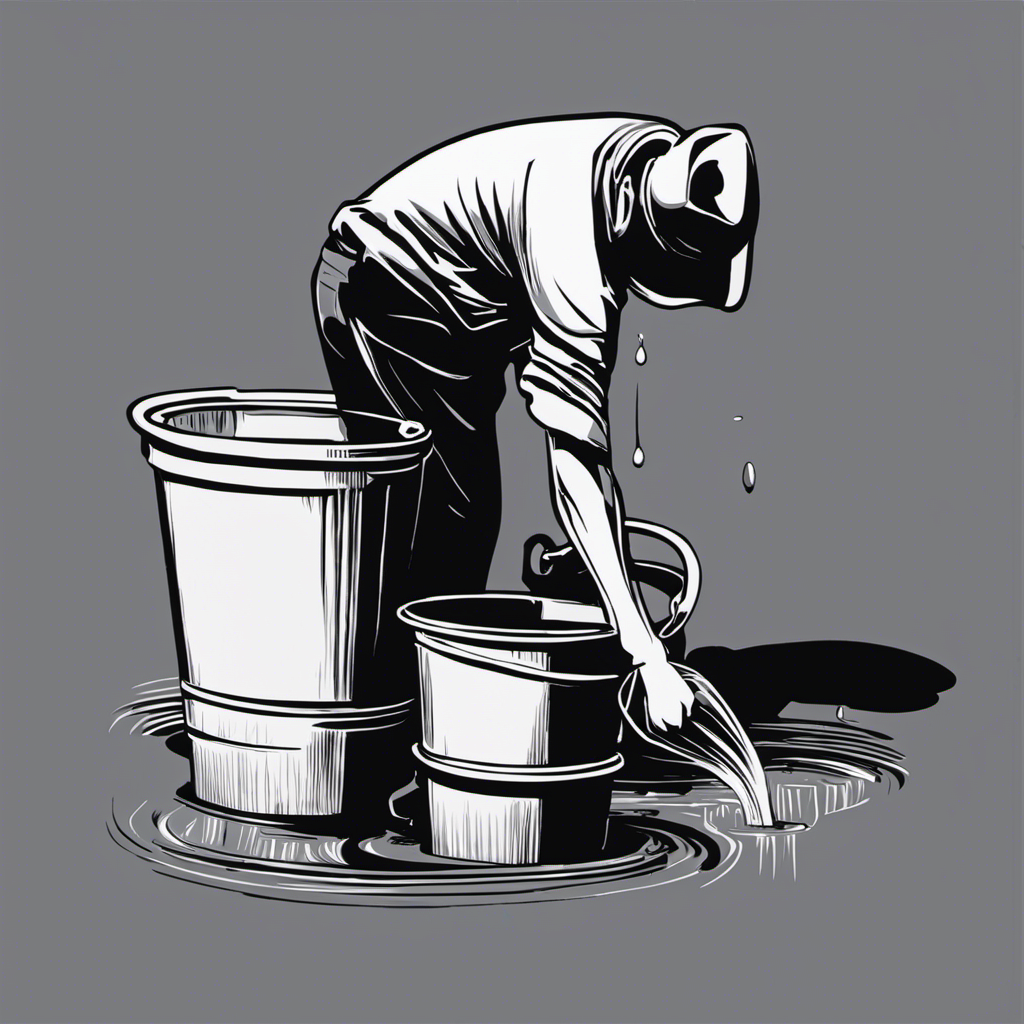As a homeowner, I know that dealing with a toilet tank leak can be as frustrating as trying to catch water with a sieve. But fear not! In this article, I will guide you through the common causes of toilet tank leaks, how to identify them, and even share some DIY fixes.
And if all else fails, I’ll let you know when it’s time to call in a professional plumber. So let’s dive in and put an end to those pesky toilet tank leaks once and for all!
Key Takeaways
- Worn-out flapper valves and faulty seals or cracks in the tank are common causes of toilet tank leaks.
- Some signs of a leaking toilet tank include water pooling around the base, continuous running sound after flushing, visible cracks or gaps in the tank, and an unexplained increase in water bill.
- DIY fixes for toilet tank leaks include turning off the water supply, emptying the tank, replacing the flapper valve, checking for leaks, and adjusting the water level.
- It is advisable to call a professional plumber if water leakage persists, there is a foul smell, slow draining or water backing up into the bowl occurs, continual water leakage indicates a major problem, or for accurate diagnosis and long-lasting solutions.
Common Causes of Toilet Tank Leaks
One common cause of toilet tank leaks is when the flapper valve becomes worn out and needs to be replaced. The flapper valve is located at the bottom of the toilet tank and is responsible for sealing the tank and preventing water from continuously flowing into the bowl. Over time, the rubber material of the flapper valve can deteriorate, resulting in leaks.
To fix this issue, you will need to perform a toilet tank repair by replacing the worn-out flapper valve. Regular toilet tank maintenance is essential to prevent leaks and ensure the proper functioning of your toilet. By regularly checking and replacing worn-out parts, you can avoid costly water damage and keep your toilet in good working condition.
Now, let’s move on to how to identify a leaking toilet tank.
How to Identify a Leaking Toilet Tank
To identify a leaking toilet tank, you can look for signs such as water pooling around the base of the toilet or a continuous running sound after flushing. These signs indicate that there might be a problem with the tank, and it’s important to address it promptly to avoid further damage.
Here are three key things to look out for when identifying a leaking toilet tank:
-
Water pooling: If you notice water accumulating around the base of the toilet, it could be a clear indication of a leaking tank. This water may be caused by a faulty seal or crack in the tank.
-
Constant running sound: If you hear a continuous running sound even after you’ve flushed the toilet, it could mean that water is continuously leaking from the tank. This could be due to a faulty flush valve or a worn-out flapper.
-
Increased water bill: A sudden increase in your water bill without any other explanation could be a sign of a leaking toilet tank. This is because the tank will constantly be refilling itself, wasting water in the process.
DIY Fixes for Toilet Tank Leaks
By following these simple DIY fixes, you can easily address and resolve any issues with a leaking toilet tank. First, gather the necessary DIY tools such as an adjustable wrench, plunger, and a new flapper valve. Next, follow these troubleshooting steps:
| Troubleshooting Steps | Description |
|---|---|
| Step 1: Turn off the water supply | Locate the shut-off valve and turn it clockwise to stop the flow. |
| Step 2: Empty the tank | Flush the toilet and hold the handle down to drain the tank. |
| Step 3: Replace the flapper valve | Remove the old flapper valve and install a new one. |
| Step 4: Check for leaks | Turn on the water supply and observe if the tank still leaks. |
| Step 5: Adjust the water level | Adjust the float to ensure the water level is at the correct height. |
When to Call a Professional Plumber
If you notice persistent water leakage after attempting DIY fixes for a leaking toilet tank, it may be time to call a professional plumber. While it’s great to tackle minor toilet repairs on your own, there are certain signs that indicate a major plumbing issue that requires expert assistance. Here are three signs that you should call a professional plumber:
-
Continual Water Leakage: If you’ve tried various DIY fixes and the water leakage from your toilet tank persists, it’s a clear indication that there’s a more serious problem at hand. A professional plumber can accurately diagnose the issue and provide a long-lasting solution.
-
Sewage Odor: If you detect a foul smell coming from your toilet even after attempting DIY repairs, it could be a sign of a major plumbing issue. A professional plumber will be able to identify the underlying cause and prevent any further damage.
-
Slow Draining: If your toilet is slow to drain or if you notice water backing up into the bowl, it’s a sign that there may be a blockage in the plumbing system. Calling a professional plumber will ensure that the blockage is cleared efficiently, preventing any further damage to your toilet or pipes.
Preventing Future Toilet Tank Leaks
One way to avoid future toilet tank leaks is to regularly check the water supply line for any signs of damage or wear. The water supply line is responsible for delivering water to the toilet tank, and if it becomes damaged or worn out, it can lead to leaks and water damage. Regular inspections of the water supply line can help identify any potential issues before they escalate into costly repairs. To emphasize the importance of regular inspections, take a look at the table below:
| Signs of Damage or Wear | Actions to Take |
|---|---|
| Cracks or splits | Replace the line |
| Loose connections | Tighten fittings |
| Corrosion | Replace the line |
| Bulging or kinks | Straighten or replace the line |
Conclusion
In conclusion, dealing with a toilet tank leak can be a frustrating experience. However, with the right knowledge and tools, it can be easily fixed.
By identifying the cause of the leak and following the appropriate DIY solutions, you can save both time and money. It’s always best to call a professional plumber if the problem persists or seems too complex.
Remember, taking preventative measures such as regular maintenance and inspections can help avoid future toilet tank leaks.
Don’t let a leaking toilet tank dampen your day. Take action and restore the peace in your bathroom.










